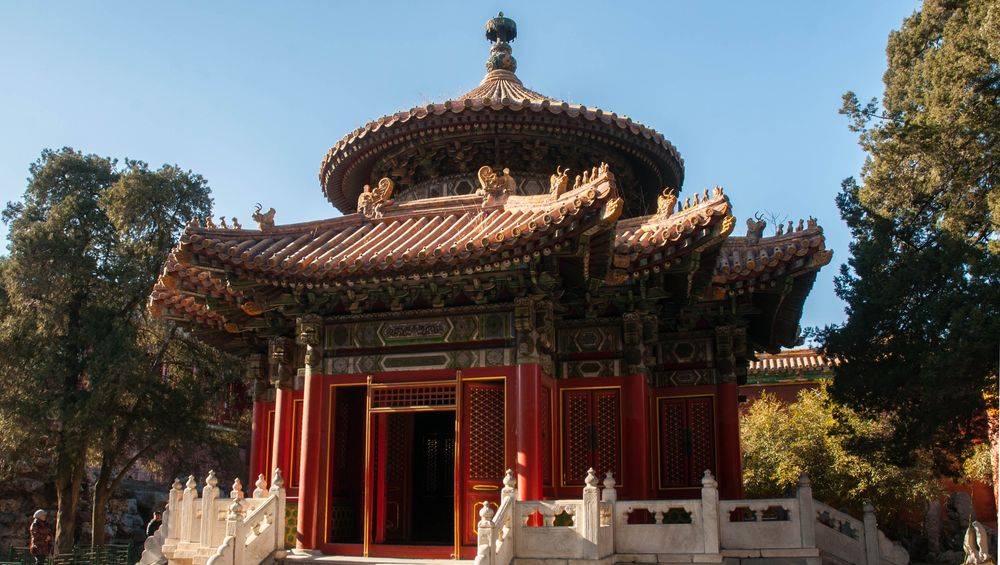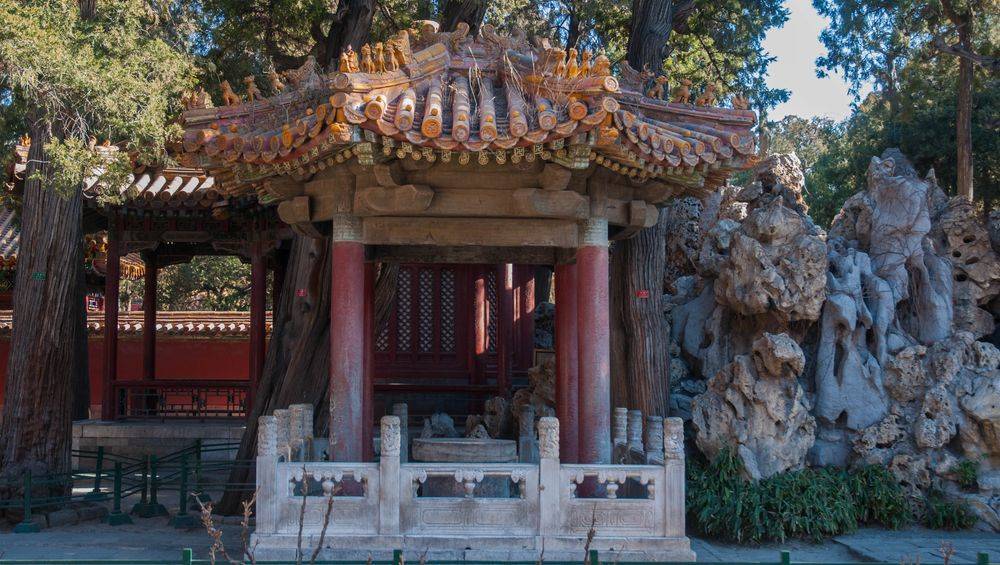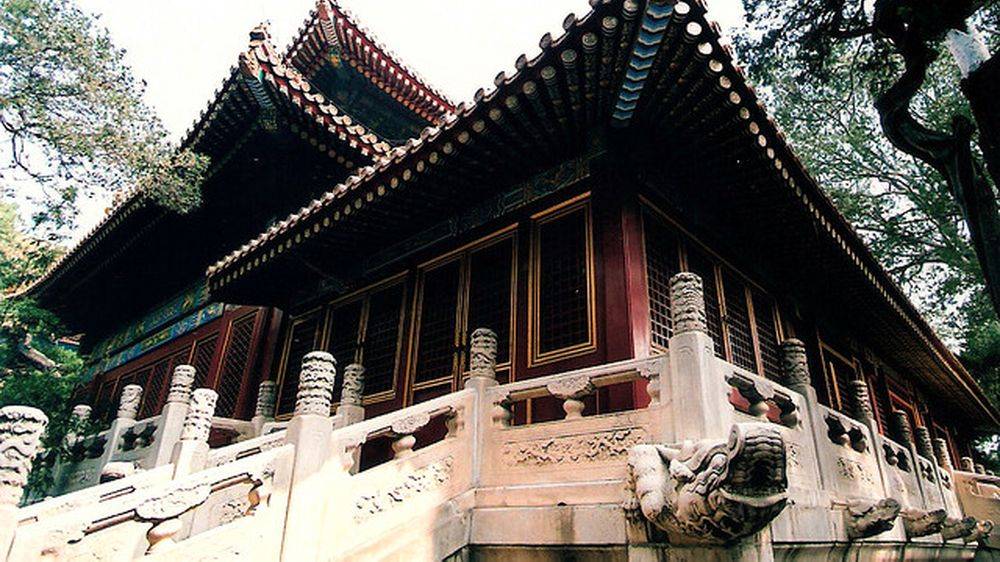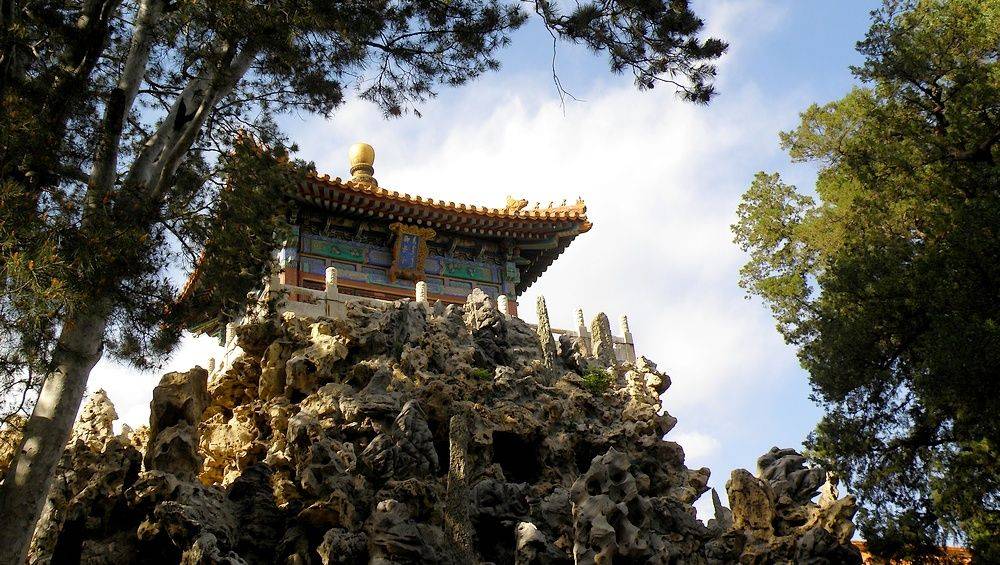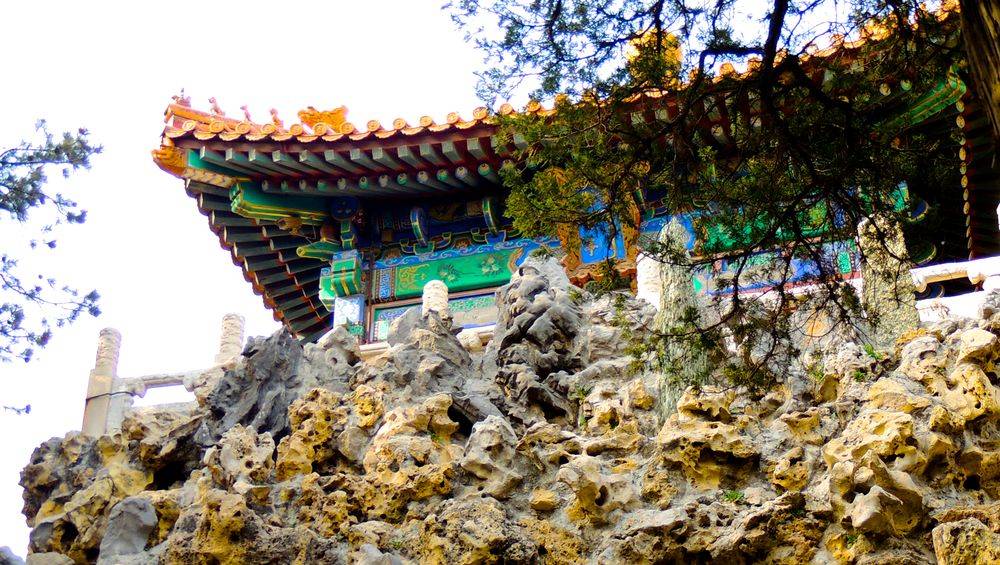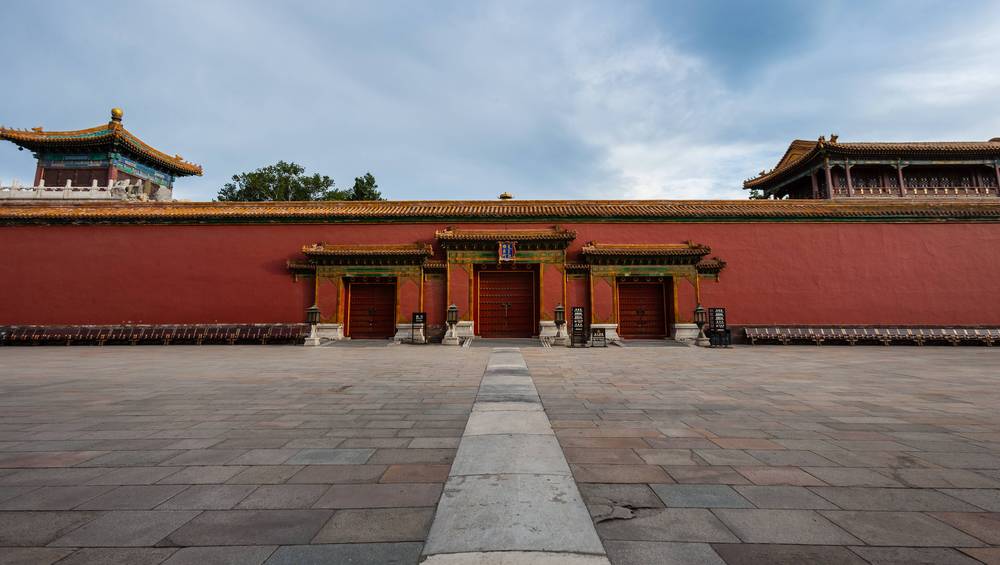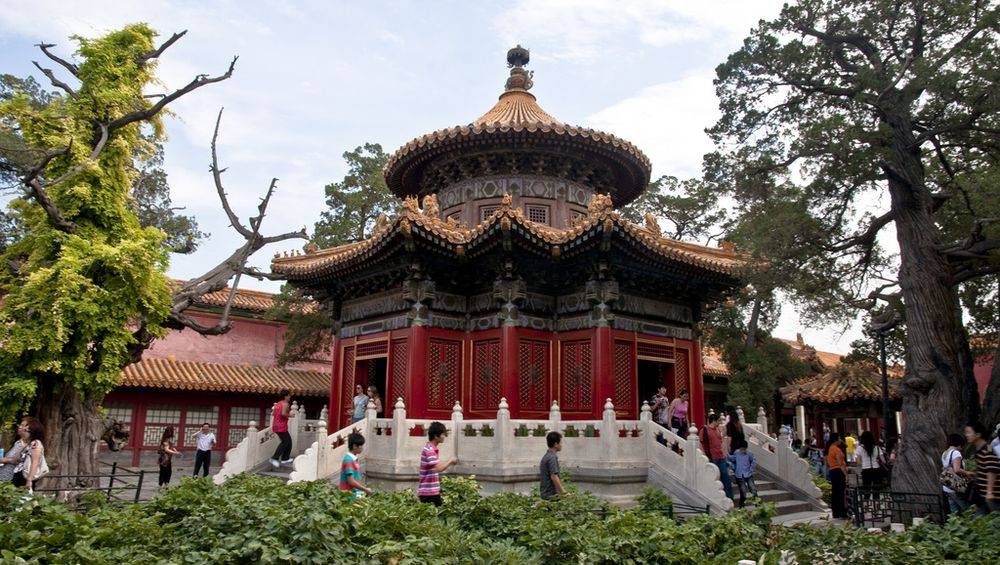The imperial garden is the smallest of the eight areas of the palace. It is just north of the Forbidden City, facing the door of the divine prowess guarding the North entrance. Geographically, it is a rather small rectangle composed of a succession of gardens and pavilions of modest size. This is where we find the pavilions of the least conventional forms: some are disc-shaped, others are shaped like towers, etc.
General information on the imperial garden
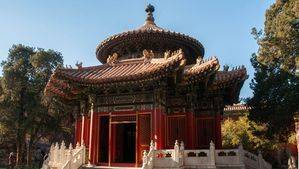
Imperial garden
The Imperial Garden is located after the gate of the Terrestrial Tranquility. Built in the dynasty Ming in 1417, ie to the construction of the Forbidden City, it is rectangular in shape of 130 x 90 m and covers approximately 12,000 square meters. It was a private refuge for the imperial family and it is perhaps the most typical example of Chinese garden design. It has about twenty buildings, each of a different style, and the ways in which they harmonize with trees, rock gardens, flower beds and sculptural objects such as bronze incense burners are of great harmony.
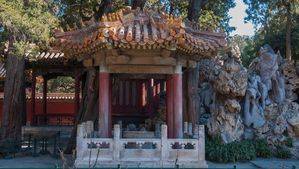
Imperial garden
At each of the four corners of the garden there is a pavilion. They symbolize the four seasons. The most famous one occupies the corner of the East. Built in 1535 and restored during the Qing Dynasty, it is the pavilion that symbolizes spring. In the north-east of the garden you can climb a small artificial hill, with a cave. It is dominated by the Imperial Vision Pavilion (Yujingyuan). Emperors rarely went up there. Visitors will find that the paths are paved with varied patterns made of colored pebbles, symbolizing luck and fortune. The more attentive visitor will find a group of images depicting wives punishing their husbands. It seems strange that these images are carved here, at a time when the male domination and especially the omnipotence of the emperor prevailed. At the northern end of the garden is Shenwumen, the Divine Power Gate, and the rear exit of the Forbidden City.
List of the pavilions of the imperial garden
Temple of the imperial peace (Qin'an dian)
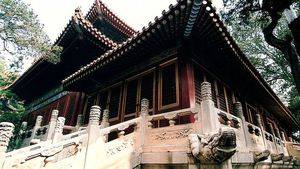
Temple of the imperial peace
This temple is the dominant building of the garden, it occupies a central position. Surrounded by a wall, it dates from the 15th century. Just in front of him stands a 400-year-old pine tree, it is known as Consort Pine, it symbolizes the harmony between the emperor and the empress. The door of the room is protected from evil spirits by two unicorns. Inside the temple was dedicated to the Taoist god of Water, Zhenwudadi, to help protect the Forbidden City against fires.
Bower of crimson snow (Jiangxue xuan)
The Crimson Snow Kiosk is a small building located in the Imperial Gardens. If it bears this name it is because of the trees that are planted there that, when they are in full bloom, bring down their petals of flowers as the snow falls. However, it is bright red flowers, hence the word "crimson". The scientific name of these trees is "Philadelphus pekinensis".
It seems that this place was so beautiful that the emperors Kangxi (1662-1722) and Qianlong (around 1736-1795) came here to compose poems here. The Belvedere ladder and floor plan are complemented by the Mind Culture Gazebo (Yangxing Zhai) which is in the same location on the west side of the garden. Buildings like these were part of the original arrangement of the Imperial Garden in 1420.
Pavilion of myriad springtimes (Wanchun ting)
The Ten Thousand Spring Pavilion is a small building located in the Imperial Gardens. It is after the construction of the forbidden city, it dates from 1535 (The forbidden city was built between 1407 and 1420). His name is due to the fact that the emperor regularly received shouts of voice "Ten thousand lives!"
This pavilion is original in that it has a square base and a circular tower, a real technical challenge that was also raised by the cathedral builders in Europe.
Floating jade Pavilion (Fubi tig)
The Floating Jade Pavilion is a small building located in the Imperial Gardens.
Pavilion of the extension of grace (Chizao tang)
The Grace Extension Pavilion is a small building located in the Imperial Gardens. Built under the Ming (1368-1644), this pavilion was a library where the works of the four imperial libraries of Emperor Qianlong (1736-1795) were held. The latter went there when he wanted to read at his free time. This 12,000-volume collection is now preserved in the Taipei Palace Museum.
Imperial prospect pavilion (Yujing ting)
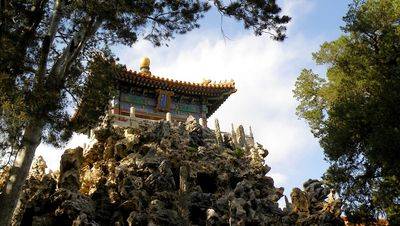
Imperial prospect pavilion
The Imperial Prospect Pavilion is a small building located in the Imperial Gardens. It has a square shape and measures approximately 3m of side only. It looks more like a kiosk than a pavilion. It has a magnificent four-sided roof ending in a golden ball. This pavilion is the sum of a rocky mass that has been imported to rebuild a hill.
Mountain of accumulated elegance (Duixiu shan)
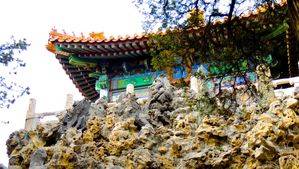
Mountain of accumulated elegance
The mountain of accumulated elegance is found in the imperial gardens. It is an artificial stone hill located in the northern part of the imperial garden. The site was originally a floral site, until Emperor Wanli (1573-1620) commanded the construction of an artificial hill at the end of the 16th century. The hill is about ten meters high and has a winding steep path that leads to the summit. A plaque suspended in the center of the cave door is inscribed with the words "Accumulated Elegance".
In front of the hill there is an animal statue that throws a water column almost as high as the mountain itself. It's the only fountain that survived in the imperial palace.
Gate of loyal obedience (Shunzhen men)
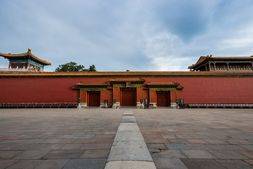
Gate of loyal obedience
The door of loyal obedience is found in the imperial gardens. It is the northern gate of the Imperial Garden (Yu Huayuan), the northern end of the inner palaces. After the door of loyal obedience one arrives at the door of the divine feat (men Shenwu), which leads to the outside of the palace. This door serves as a bridge between the inner courtyard (on the North side) and the outside. It was generally closed except for special occasions. The gate of loyal obedience was first built during the Ming Dynasty (1368-1644) and was originally named the gate of earthly tranquility (Kunning men).
Others buildings of the imperial garden
At the southwest corner of the garden is a school, named in Chinese Yang Xing Zhai. At the other corner is Jiang Xue Xuan, an imperial villa. Its decoration is simple, elegant. It has beautiful flower beds decorated with dragon-shaped patterns, surrounded by white marble. The color contrast is strong but successful. The Thousand Fall Pavilion is on the west side of the garden. It is a small round building with double tiled roofs. The Floating Green Jade Pavilion (Fubiting) is another small square building in the garden, overlooking a small pond. It has an open corridor at the roof level on the south side. Its pendant is the Pavilion of the Clarity of Good-Augur (Chengruiting), which is identical. There remains another square, rather small pavilion (Diu Xiu Shan), the Pavilion of eternal sunshine (Yan Hui Ge) and another school (Weiyuzhai).
Gate of the primacy of Heaven (Tianyi men)
This gate is near the imperial garden.
Lodge of spirit culture (Yianxing zhai)
This lodge is inside the imperial garden.
Pavilion of one thousand autumns (Qianqiu ting)
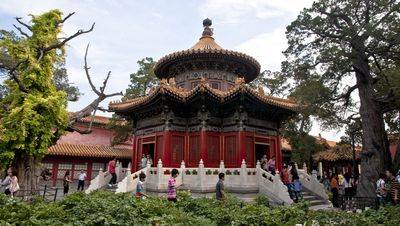
Pavilion of one thousand autumns
This pavilion is in the imperial garden. Built in the Ming Dynasty (1368-1644), it is square with a round roof and porches on all four sides, giving it a particular and technically accomplished architecture. It has carved eaves and multiple angles with the same shape and cross structures found on the ten thousand spring pavilion. (Wanchun ting), East side of the garden. Buddhist statues have been dedicated here, as well as the spiritual tablet of Emperor Tongzhi (1862-1874). This pavilion is located to the west of the imperial garden, a direction that, according to Chinese philosophy, correlates with autumn.
Sanctuary of the four deities (Sichen ci)
This sanctuary is in the imperial garden.
Pavilion of auspicious clarity (Chengrui ting)
This pavilion is in the imperial garden. It was built in 1583 during the Ming Dynasty (1368-1644). It has a veranda and rests on a single arch bridge that extends over a fish pond. This square pavilion has four open sides and a pyramid-shaped roof with green ceramic tiles. The adjoining veranda has a rolled roof, which is rather original. The pavilion is symmetrical with the floating Jade Pavilion (Fubi ting) on the east side of the garden.
Studio of establishing teachings (Weiyu zhai)
Ce pavillon se trouve dans le jardin impérial. De façon assez originale ce pavillon, qui était une salle de classe, ressemble... à un préfabriqué !
The Teaching Lodge is located in the northwestern part of the Imperial Garden (Yu Huayuan). It has been renamed several times and took the current name in the Qing Dynasty (1644-1911). Weiyu's name is derived from a phrase in "The Doctrine of Golden Mean" (Zhongyong), highlighting one of the political ideals of Confucius' teaching. In front of the studio is a pond on which an arch bridge was built. Above the bridge is the Pavilion of auspicious clarity (Chengrui ting). The pavilion was used as a room for Buddha worship for a time.
Belvedere of prolonging splendor (Yanhui Ge)
This gazebo is in the imperial garden. It is built in height, on limestone rock from Taihu Lake, and has a square shape. Its summit is very decorated with bright colors, its roof is square too, it ends in the center by a ball.
It has the characteristic of being adorned with calligraphy, an important art in ancient China.
See also:






